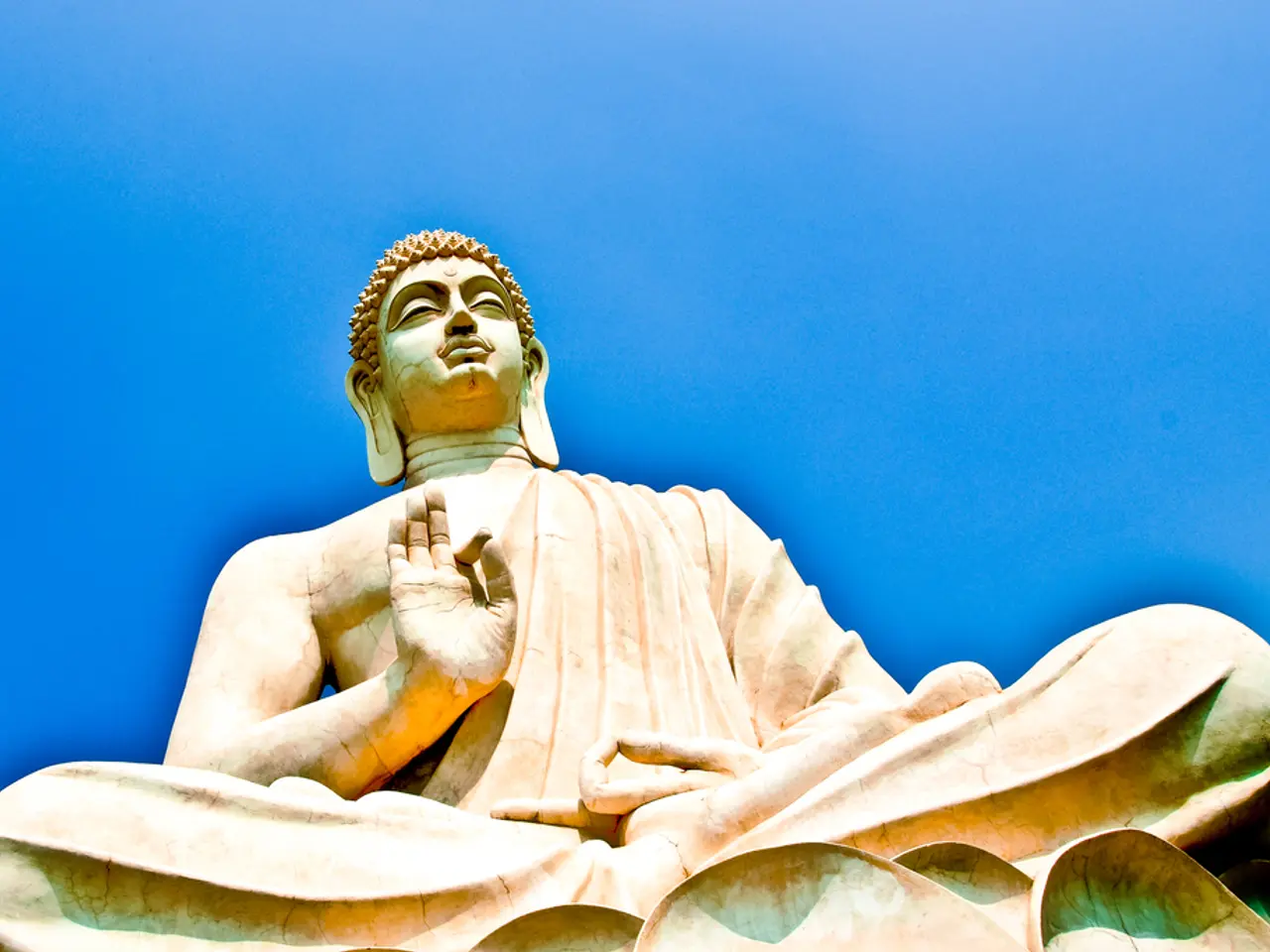Techniques for Inducing an Unusual Awareness State Through Meditation
In the quest for self-realization and inward growth, meditation has emerged as a powerful tool. By focusing the mind and renewing mental energy, meditation can heal the mind and body, and help individuals develop new ways of handling daily stressors.
For beginners, the process of meditation may seem daunting, but with consistency and the right techniques, an altered state of consciousness can be achieved. Here's a step-by-step guide to help you embark on this transformative journey.
1. **Establish a Regular Meditation Practice** Begin by dedicating a quiet, special spot for daily meditation sessions, starting with 10 to 20 minutes. Consistency helps deepen the experience over time.
2. **Focus and Still Your Mind** Learn to focus your mind on a single object or sensation to quiet mental chatter. For example, try concentration meditation by observing your breath, feeling that you and your breath merge in an expanded reality.
3. **Use Guided or Structured Meditations** Beginners benefit from guided imagery, body scan meditations, or chanting to ease entry into altered states. Some techniques involve focusing on bodily sensations, rhythmic sounds, or verbal repetition that induce trance-like states.
4. **Explore Meta-Cognitive and Time Perception Meditations** These advanced beginner techniques involve observing your own thinking patterns consciously or intentionally altering your awareness of time passing, which can shift your normal consciousness.
5. **Embrace Sensory or Cognitive Alterations** Methods like synesthesia meditation (cross-sensory imaginative states), binaural beats, or sensory deprivation (e.g., eye masks) can enhance altered states by changing sensory inputs or brainwave patterns.
6. **Incorporate Contemplative Insights (Emptiness, Non-Duality)** As you progress, reflect on philosophical concepts such as "emptiness," which teaches that objects, thoughts, and even the self lack inherent essence. Deep engagement with these ideas in meditation can dissolve usual distinctions of self and reality—core to altered consciousness.
7. **Practice Emotional Regulation and Mind Training** Use mindfulness to observe and modulate your emotions without attachment, which changes brain function over time and supports deeper altered states.
For beginners, focusing on breathing is the best tool for achieving an altered state of consciousness during meditation. It allows the mind to relax and the soul to wander. As you progress, you may find that focusing on a thought or piece of memory, or maintaining a "no mind" state may be more effective.
Remember, there is no such thing as good or bad meditation, as it is simply what it is. The ultimate goal is to achieve an altered state of consciousness, which can lead to self-realization and inward growth. With patience, dedication, and the right techniques, you can embark on this transformative journey.
- In the realm of health-and-wellness and personal-growth, meditation, as a potent tool, can help alter one's consciousness, leading to self-realization and inward growth.
- For mental-health and education-and-self-development, learning techniques such as focusing on breathing, guided meditations, and mindfulness can assist in achieving an altered state of consciousness during meditation.
- By incorporating advanced meditation practices like meta-cognitive and time perception meditations, contemplative insights (emptiness, non-duality), or sensory alterations, one can further deepen their altered state of consciousness and foster a broader perspective on their mental health and overall well-being.




